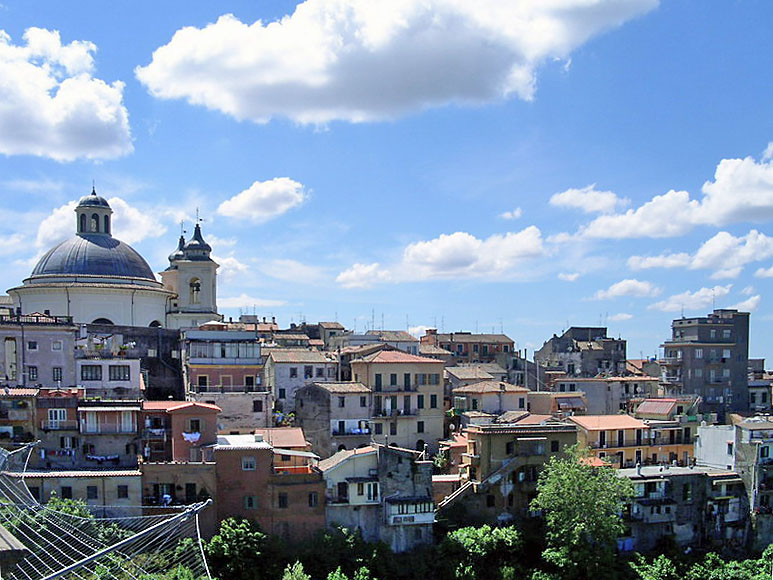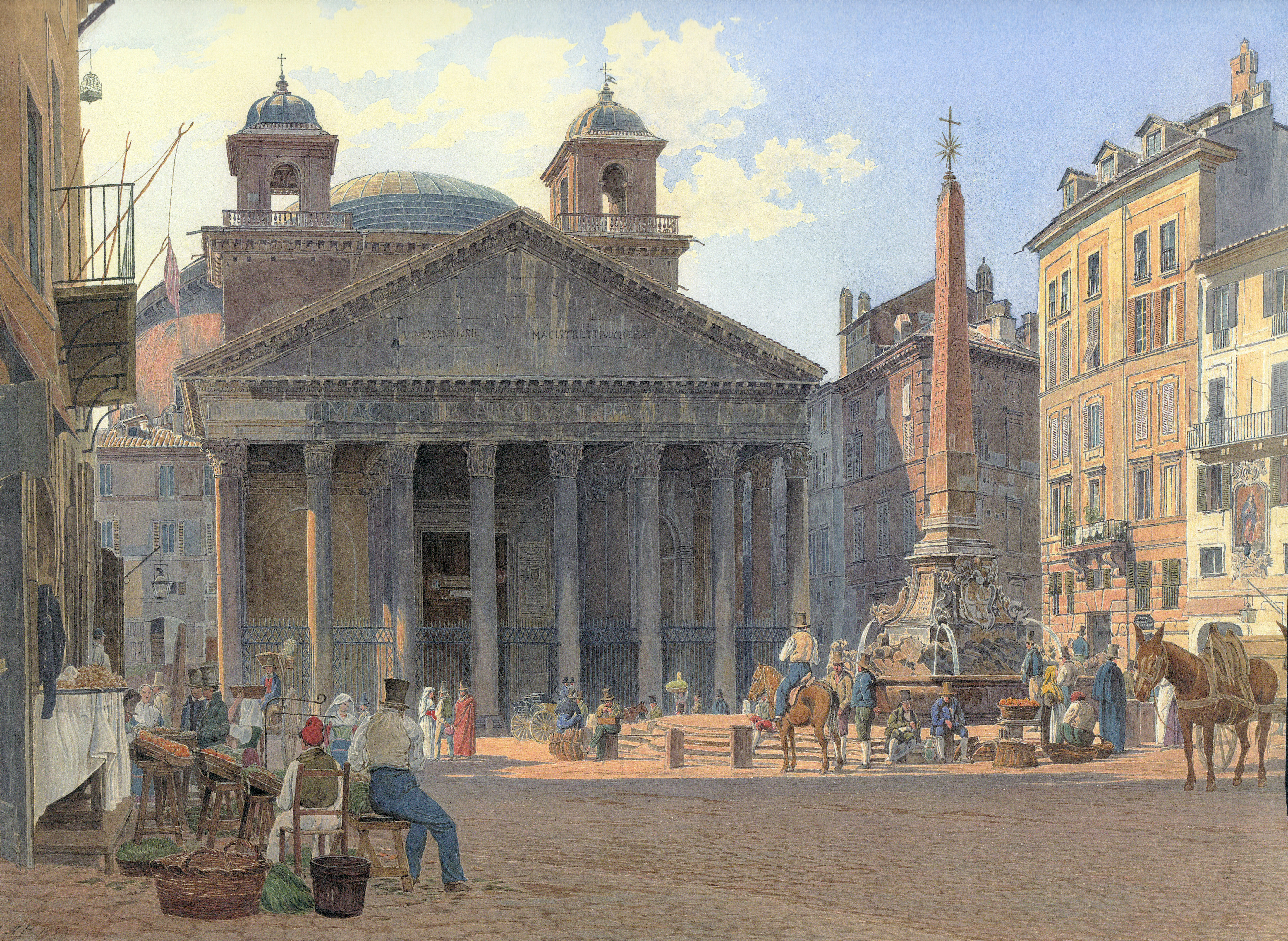|
Mario Nuzzi
Mario Nuzzi, who went by the pseudonym, Mario de' Fiori (19 January 1603, in Rome – 14 November 1673, in Rome) was an Italian painter in the Baroque style. His paintings are all based around floral arrangements; hence the name Fiori (flowers). Biography He was the second son of Sisto Nuzzi, a landowner from Penna in Teverina, and his wife Faustina Salini, sister of the still-life painter Tommaso Salini.Giuseppe Bartocci, "Della patria del pittore Mario Nuzzi", in ''Atti e memorie della Deputazione di storia patria per le Marche'', 1961. In 1618, his father took the family back to Penna, where they engaged in floriculture and Mario amused himself by painting the flowers. This led, in 1620, to an apprenticeship in the workshop of his uncle Tommaso.Francesco Solinas, ''Flora Romana. Fiori e cultura nell'arte di Mario de' Fiori'' (exhibition catalog), Roma 2010 Mario remained there until 1625, when his uncle died. While there, he was influenced by the works of Caravaggio, who had ... [...More Info...] [...Related Items...] OR: [Wikipedia] [Google] [Baidu] |
Giancarlo De' Medici
Giancarlo de' Medici (24 July 1611 – 22 January 1663) was an Italian cardinal of the House of Medici. He was the second son of Grand Duke Cosimo II of Tuscany and his wife, Maria Maddalena of Austria, and the brother of Ferdinando II de' Medici, Grand Duke of Tuscany. Biography He was born at Florence, the second son and third child of Cosimo II de' Medici, Grand Duke of Tuscany and Maria Maddalena of Austria. He entered the ecclesiastical state at a young age. In 1620 he joined the Sovereign Military Order of Malta and was named Grand Prior of Pisa. In 1638 he was named General of the Mediterranean Sea. On 14 November 1644 Pope Innocent X created Giancarlo a cardinal-deacon as a token of his affection toward the Medici. Thus forced to give up his military career and with it the title of "General of the Spanish Seas", Giancarlo could not reconcile himself to his new "religious" lifestyle. Cardinal de' Medici participated in the papal conclave, 1655 as one of leaders of the ... [...More Info...] [...Related Items...] OR: [Wikipedia] [Google] [Baidu] |
Carlo Maratti
Carlo Maratta or Maratti (13 May 162515 December 1713) was an Italian painter, active mostly in Rome, and known principally for his classicizing paintings executed in a Late Baroque Classical manner. Although he is part of the classical tradition stemming from Raphael, he was not exempt from the influence of Baroque painting and particularly in his use of colour. His contemporary and friend, Giovanni Bellori, wrote an early biography on Maratta. Biography Born in Camerano (Marche), then part of the Papal States, Maratta went to Rome in 1636, accompanied by, Don Corintio Benicampi, secretary to Taddeo Barberini. He became an apprentice in the studio of Andrea Sacchi. It was at this time that the debate between Sacchi and Pietro da Cortona took place at the Accademia di San Luca, the artists academy in Rome. Sacchi argued that paintings should only have a few figures which should express the narrative whereas Cortona countered that a greater number of figures allowed for the developm ... [...More Info...] [...Related Items...] OR: [Wikipedia] [Google] [Baidu] |
Filippo Lauri
Filippo Lauri (25 August 1623 - 12 December 1694) was an Italian painter of the Baroque period, active mainly in Rome. ''Miracle of St Vincent Ferrer'' Born and active in Rome, his story was featured in the biographies by Baldinucci. He first studied with his father, Balthasar Lauwers (Italianized as Lauri), who was a Flemish landscape painter; and then studied with his elder brother, Francesco Lauri. Afterwards, he worked under his brother-in-law, Angelo Caroselli. Filippo's brother had been a pupil of Andrea Sacchi. In 1654 Lauri became a member of the Accademia di San Luca in Rome, and later became the ''Principe'' or director of the academy. He painted along with Filippo Gagliardi a canvas depiction of ''Celebrations for Christine of Sweden at Palazzo Barberini'' (now at Palazzo Braschi), which demonstrates the exuberant pageantry common in their time. Filippo's father had emigrated from Antwerp, and was a pupil of Paul Bril. Filippo's oldest brother Francesco Lauri was ... [...More Info...] [...Related Items...] OR: [Wikipedia] [Google] [Baidu] |
Ariccia
Ariccia (Latin: ''Aricia'') is a town and ''comune'' in the Metropolitan City of Rome, central Italy, southeast of Rome. It is in the Alban Hills of the Lazio (Latium) region and could be considered an extension of Rome's southeastern suburbs. One of the Castelli Romani towns, Ariccia is located in the regional park known as the "Parco Regionale dei Castelli Romani". Overview Ariccia is the center of a region that was extremely important in Roman and pre-Roman mythology and religion because of its association with the goddess Diana and the god Virbius. Legend also recalls that it served as a temporary burial place of the Greek hero Orestes. Ariccia was one of the oldest cities of ancient Latium, and as the leader of the Latin League was a serious contender against Rome during the early days of the Roman Republic. In modern times, Ariccia has become famous for its porchetta, pork that is slowly roasted with herbs and wild fennel, and it has been known since historical times for ... [...More Info...] [...Related Items...] OR: [Wikipedia] [Google] [Baidu] |
Palazzo Chigi Of Ariccia
The Palazzo Chigi of Ariccia was the ducal palace of the Chigi family located in the center of the town of Ariccia, near Rome, Italy. Originally a 15th-century palace of the Savelli family stood at the site, it was rebuilt during 1664 to 1672, in a Baroque style by the Chigi Family. The work was a collaboration between Gian Lorenzo Bernini and his pupil Carlo Fontana. The sober exterior does not reflect the highly decorated interiors. The palace and park were ceded to the Commune in 1988 by the prince Agostino Chigi Albani della Rovere, and now served as a host of exhibitions and events. It hosts the ''Museo del Barocco Romano'' encompassed by some of the remaining Chigi family collections. These include the following paintings: *''Four Seasons'' by Mario de’ Fiori in collaboration with Carlo Maratti, Bernardino Mei, Giacinto Brandi, Giovanni Maria Morandi, and Filippo Lauri *''Allegory of the Senses'' by Pier Francesco Mola *''Preparatory sketches (cartoons) for mosaics of ... [...More Info...] [...Related Items...] OR: [Wikipedia] [Google] [Baidu] |
Basanite
Basanite () is an igneous, volcanic (extrusive) rock with aphanitic to porphyritic texture. It is composed mostly of feldspathoids, pyroxenes, olivine, and plagioclase and forms from magma low in silica and enriched in alkali metal oxides that solidifies rapidly close to the Earth's surface. Description Basanite is an aphanitic (fine-grained) igneous rock that is low in silica and enriched in alkali metals. Of its total content of quartz, feldspar, and feldspathoid ( QAPF), between 10% and 60% by volume is feldspathoid and over 90% of the feldspar is plagioclase. Quartz is never present. This places basanite in the basanite/tephrite field of the QAPF diagram. Basanite is further distinguished from tephrite by having a normative olivine content greater than 10%. While the IUGS recommends classification by mineral content whenever possible, volcanic rock can be glassy or so fine-grained that this is impractical, and then the rock is classified chemically using the TAS classifica ... [...More Info...] [...Related Items...] OR: [Wikipedia] [Google] [Baidu] |
Accademia Di San Luca
The Accademia di San Luca (the "Academy of Saint Luke") is an Italian academy of artists in Rome. The establishment of the Accademia de i Pittori e Scultori di Roma was approved by papal brief in 1577, and in 1593 Federico Zuccari became its first ''principe'' or director; the statutes were ratified in 1607. Other founders included Girolamo Muziano and Pietro Olivieri. The Academy was named for Luke the Evangelist, the patron saint of painters. From the late sixteenth century until it moved to its present location at the Palazzo Carpegna, it was based in an urban block by the Roman Forum and although these buildings no longer survive, the Academy church of Santi Luca e Martina, does. Designed by the Baroque architect, Pietro da Cortona, its main façade overlooks the Forum. History The Academy's predecessor was the ''Compagnia di San Luca'', a guild of painters and miniaturists, which had its statutes and privileges renewed at the much earlier date of 17 December 1478 by Pope ... [...More Info...] [...Related Items...] OR: [Wikipedia] [Google] [Baidu] |
Dizionario Biografico Degli Italiani
The ''Dizionario Biografico degli Italiani'' ( en, Biographical Dictionary of the Italians) is a biographical dictionary published by the Istituto dell'Enciclopedia Italiana, started in 1925 and completed in 2020. It includes about 40,000 biographies of distinguished Italians. The entries are signed by their authors and provide a rich bibliography. History The work was conceived in 1925, to follow the model of similar works such as the German ''Allgemeine Deutsche Biographie'' (1912, 56 volumes) or the British '' Dictionary of National Biography'' (from 2004 the ''Oxford Dictionary of National Biography''; 60 volumes). It is planned to include biographical entries on Italians who deserve to be preserved in history and who lived at any time during the long period from the fall of the Western Roman Empire to the present. As director of the Treccani, Giovanni Gentile entrusted the task of coordinating the work of drafting to Fortunato Pintor, who was soon joined by Arsenio Frugoni ... [...More Info...] [...Related Items...] OR: [Wikipedia] [Google] [Baidu] |
Congregazione Dei Virtuosi Al Pantheon
The Pontifical Academy of Fine Arts and Letters of the Virtuosi al Pantheon is one of the Pontifical Academies under the direction of the Holy See. The complete Italian name of the academy, Pontificia Insigne Accademia di Belle Arti e Letteratura dei Virtuosi al Pantheon, includes the adjective ''insigne'' (illustrious), often omitted in official English translations. The term ''Virtuosi al Pantheon'' (virtuosos of the Pantheon) is also usually left untranslated, but, in any event, should not be taken in the English musical sense of “virtuoso” but rather “artists of great merit”. The Pantheon in Rome was the historical home of the academy. The term “academy” is meant in the Renaissance definition of the term as an association of learned persons and not an institution of instruction. History The academy was founded as the “Congregation of Saint Joseph of the Holy Land” in 1542 under the auspices of the Cistercian monk, Desiderio d’Adiutorio and was recognized by Po ... [...More Info...] [...Related Items...] OR: [Wikipedia] [Google] [Baidu] |
Andrea Scacciati
Andrea Scacciati (12 August 1642, Florence - 6 June 1710, Florence) was an Italian painter in the Baroque style, known mostly for his flower paintings. He is often confused with the engraver, Andrea Scacciati (1725-1771), sometimes referred to as "The Younger", who was also from Florence. Their relationship, if any, is unclear. Life and work He was a student of Mario Balassi and Lorenzo Lippi. For many years, he was an official painter to the Grand Duchess of Tuscany, Vittoria della Rovere.Sandro Bellesi, Mina Gregori: ''Le Musée des Offices et le Palais Pitti'', Editions Place des Victoires, 2000 He often worked in collaboration with Bartolomeo Bimbi, under command of the Médicis, to produce tableaux featuring animals and plants. His tableaux are mentioned in the inventories of the Villa di Poggio Imperiale. Many of his works were in the possession of Cosimo III de' Medici, who installed them in the and the Villa Medicea L'Ambrogiana. His paintings of bouquets are disti ... [...More Info...] [...Related Items...] OR: [Wikipedia] [Google] [Baidu] |





